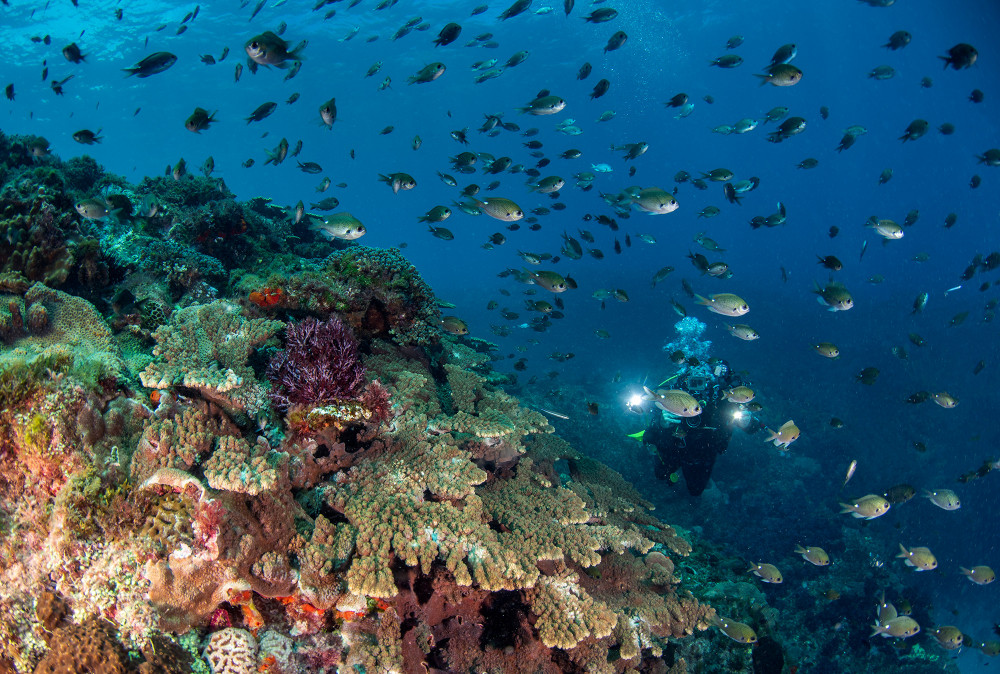Where
Norfolk Marine Park is located in the Pacific Ocean, about 1,400 kilometres east of the Australian mainland.
Who
Reef Life Survey is a non-profit citizen science program in which trained SCUBA divers undertake standardised underwater visual surveys of reef biodiversity on rocky and coral reefs around the world.
When
2009, 2013 and 2021
Why
Surprisingly, few systematic surveys and no long-term monitoring of biodiversity has occurred for the shallow water reef habitats around Norfolk Island, despite the known biodiversity values they support (including many regionally endemic species), their proximity and sensitivity to human influences and climate change, and their importance to Norfolk Islanders. This study set out to understand how the marine life and shallow marine habitats vary around the Norfolk Island coastline, and using the same methods as used for a survey of reefs in 2009, determine if and how the marine life has changed over a 13-year period.
How
Surveys of shallow reef biodiversity were undertaken in the Norfolk Marine Park (NMP) in 2009, 2013 and 2021 by teams consisting of divers from the Reef Life Survey program and the University of Tasmania. A total of 74 transects were surveyed for reef fishes, mobile invertebrates, and benthic cover at 16 sites spread around Norfolk Island, including in the shallow coral reef lagoon and at Phillip Island to the south. Each survey involved divers laying out 50 m transect lines along the reef and counting large and small fishes and mobile macroinvertebrates (e.g., sea urchins, clams, crustaceans). Photographs were taken along each transect to record organisms growing on the substrate, such as corals, sponges, and seaweeds. Surveys were undertaken in 2009 and 2021 at most sites (with a subset also surveyed in 2013), all using the same methods, allowing biodiversity change to be investigated.
What did we learn
Shallow reef sites distributed around Norfolk Island varied in their reef fauna, with different fish communities and bottom cover (e.g., corals and seaweeds) characterising sites in the north-western and southern parts of the island, as well as inside the lagoon and around Phillip Island. These reef communities do not appear to have changed substantially in the past 13 years, however, with the latest surveys revealing that coral cover, fish communities and mobile invertebrates remain similar to the original RLS surveys in 2009. This includes the coral cover in the lagoon, where a coral bleaching event reported in 2020 does not appear to have impacted live hard coral cover, at least in relation to values observed in 2009 surveys. Lagoon sites did show some signs of minor changes, with reduced fish biomass and increases in the cover of larger seaweeds on the bottom, but these observations could not be confirmed with statistics.
Limited change in shallow reef biodiversity would be expected to result from management arrangements in the recently declared NMP, as the present zoning that covers the shallow reefs has not substantially changed the fishing activities allowed and has only been in place for three years.
Norfolk Island Reef Life Survey 2021 from Marine Explorer.
What next
Detection of any management-associated or environmentally driven changes to shallow reef communities in the Norfolk Marine Park will require more frequent monitoring over the longer-term. The Lagoon habitat in the south is of particular importance, in terms of the locally distinct reef fauna and habitat, as well as its importance for tourism and as an area accessible for people to interact with marine life in an Australian Marine Park. A decline in already low fish biomass and minor habitat changes in the lagoon need more data to confirm and could ideally be carefully monitored.




